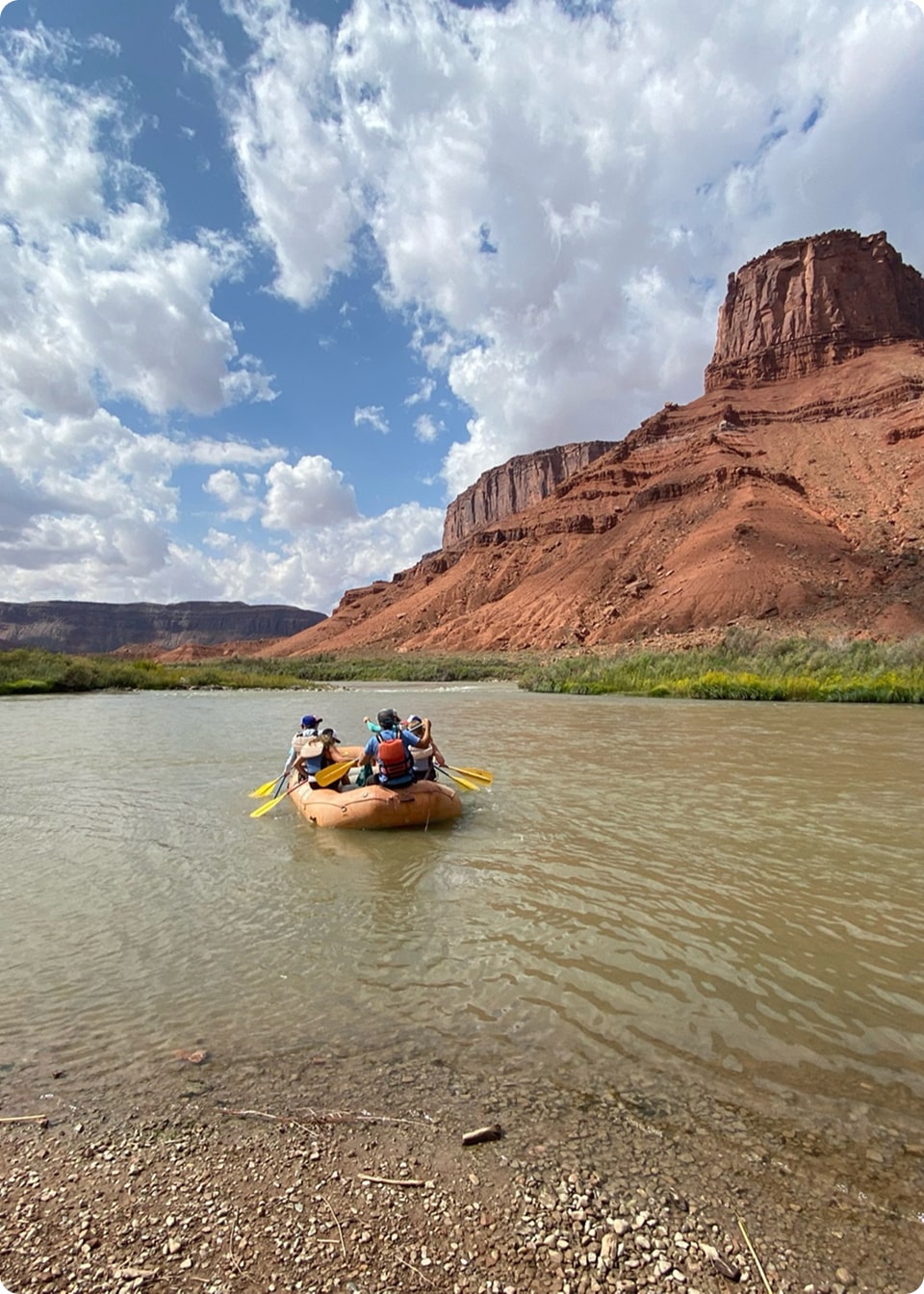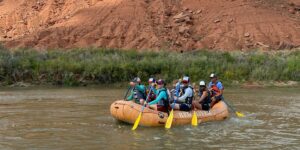Rafting the Colorado River near Moab is the ultimate way to experience the beauty and fun that have made Moab famous. With expert guides, iconic red rock views, and splashes of adventure, it’s the perfect trip for first-timers and seasoned paddlers alike.
Family-friendly half and full-day trips near Moab
Incredible scenery and fun, splashy rapids
Over 20 years of top-rated rafting experience
Red River Adventures offers guided trips on the stunning Fisher Towers rafting section of the Colorado River — one of the most scenic stretches of rafting in Utah. You’ll float past dramatic sandstone towers, hear stories about Moab’s geology and film history, and enjoy swimming and river games along the way.
This Colorado River rafting in Moab experience is more than whitewater it’s part nature tour, part desert playground. Highlights include seven named rapids, calm stretches for swimming, and expert commentary on Moab’s history, geology, and wildlife. Whether you choose a half-day or full-day whitewater rafting Utah adventure, you’ll leave with amazing memories, new stories, and plenty of smiles.

Our Moab river guides have been raved about for decades. Friendly, fun and full of knowledge each is highly trained and holds certification in First Aid/CPR, ensuring a safe and informed trip from put-in to take-out.
From boats to PFDs to splash gear, we use high-quality, well-maintained equipment on every Utah rafting trip.
Carl started the company and you still catch him on the phone or in the field almost every day. With over 125,000 guests served and 150,000+ days in the field, we know what makes a river trip unforgettable.
Thousands of happy guests can't be wrong. Check us out on Google, TripAdvisor, and more.


This is the American version of a rating system used to compare river difficulty throughout the world. American Whitewater stresses that no rating system is exact. Paddlers should always consult a current guidebook or obtain first-hand descriptions of river status.
We guide trips on the Fisher Towers section of the Colorado River near Moab — a stunning stretch that’s been featured in movies and TV for more than 50 years. With towering red rock views, inviting swimming spots, and fun splashy rapids, it’s the perfect adventure for all ages and experience levels.
Choose from half-day or full-day options. Full-day trips include more river miles and lunch; half-days are great for shorter schedules.
Not at all. Our trips are beginner-friendly and fully guided by experienced professionals trained to keep things safe and fun. All you need is a sense of adventure—we handle the rest.
Expect Class II rapids, with a few Class III waves in May and June when flows are higher. No matter the water level, the river is awesome—and we bring the fun.
Yes! The minimum age is 5 years old, and children must weigh 40 pounds or more. It’s a great family adventure.
All trips meet at our shop in Moab:
Red River Adventures
1140 South Main Street, Moab, UT 84532
We’ll take it from there with transportation to and from the river.
Please arrive at the time indicated on your confirmation. We will depart as soon as the group is ready. Arriving early is not recommended or necessary.
Dress for the weather! A swimsuit, shorts, and a T-shirt are the most common. For spring and fall trips, think quick-drying layers: synthetic shorts or a bathing suit on the bottom, and a T-shirt, long sleeve, or light fleece up top. We provide splash gear on trips that might be chilly.
Shoes, sandals, or anything you don’t mind getting wet. Just skip the flip flops — they come off and the river eats them.
Yes—we provide all rafting gear: PFDs (life jackets), helmets for kayaks, dry bags, splash gear (if needed), and all river safety equipment.
We’ll send a packing list after booking. Essentials include water, sunscreen, a hat, sunglasses, and a camera or phone to take photos.